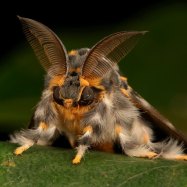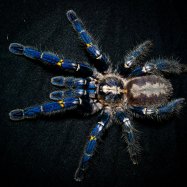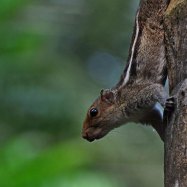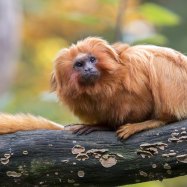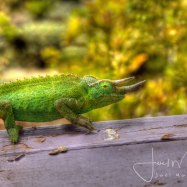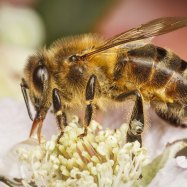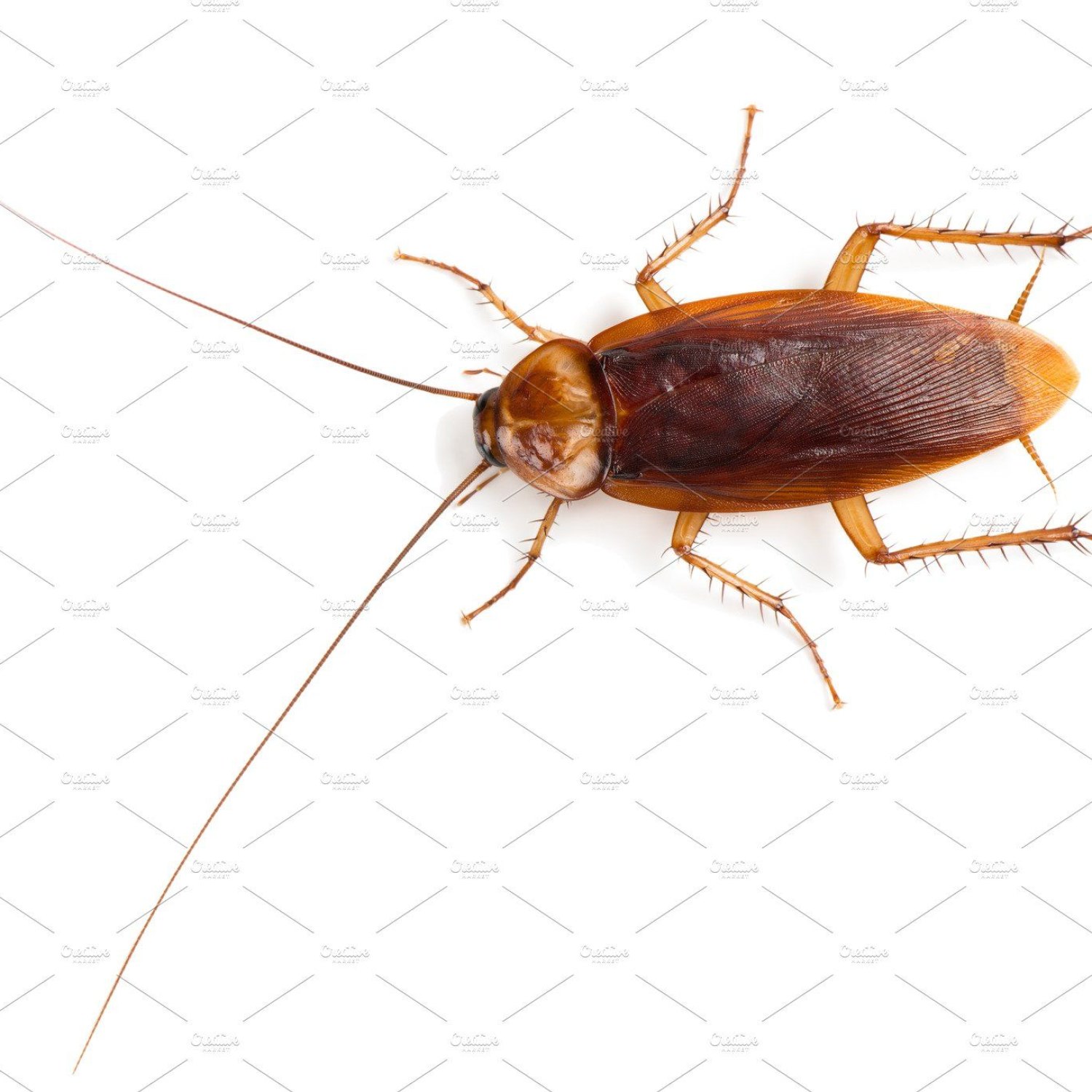
Cockroach
1.4 to 1.6 inches (3.5 to 4 cm)
Meet the cockroach, a common insect found in urban environments. These small creatures have oval-shaped bodies and can grow to be 1.4 to 1.6 inches long. Belonging to the Blattidae family, they are expert survivors and can be found almost everywhere. But don't worry, these little critters are harmless and play an important role in our ecosystem as decomposers. So next time you see a cockroach, appreciate its unique abilities and role in nature.
Animal Details Summary:
Common Name: American Cockroach
Kingdom: Animalia
Habitat: Indoors, outdoors
The Mad Scavenger: The Fascinating World of the Cockroach
We are all familiar with the presence of cockroaches in our homes or even in public places. They scurry around in the dark, often causing disgust and fear among many of us. But have you ever stopped to wonder about the fascinating world of these insects? Let's dive into the world of the American Cockroach, also known as Periplaneta americana, and uncover the hidden secrets of this misunderstood creature.The Origin of the American Cockroach
Despite its name, the American Cockroach is not native to the Americas Cockroach. In fact, it is believed to have originated in either Africa or Southeast Asia and has since spread worldwide, earning its title as one of the most cosmopolitan insects on the planet. They have been recorded in North America as early as the 1600s, and today, they can be found in almost every country in the world.Classification and Habitat
The American Cockroach belongs to the Animalia Kingdom, the Arthropoda Phylum, and the Insecta Class. They are in the order Blattodea and the family Blattidae. These insects have a wide geographical distribution and can be found in both indoor and outdoor habitats. However, they are most commonly found in urban environments such as homes, restaurants, and other buildings.Appearance and Behavior
The American Cockroach has a distinctive reddish-brown coloration and an oval-shaped body. They can grow up to 1.4 to 1 Chipmunk.6 inches (3.5 to 4 cm) in length, making them one of the largest species of cockroaches. Their wings are long and narrow, and they are capable of flying short distances.One of the most fascinating aspects of the American Cockroach is their scavenging behavior. They are considered one of the most adaptable and resilient insects, being able to survive in various environments due to their ability to feed on almost anything. They are mainly scavengers, feeding on decaying matter, plants, and even other insects. This makes them an essential part of the ecosystem, aiding in the decomposition process.
The Notorious Reputation of Cockroaches
Cockroaches have long been associated with negative connotations, often being viewed as pests and carriers of diseases. But is this reputation justified? While they can carry bacteria and disease-causing pathogens, there is no scientific evidence to support the idea that they are harmful to humans. In fact, studies have shown that cockroaches have a very low potential to transmit diseases to humans.One reason for their infamous reputation could be their presence in unsanitary conditions. Due to their scavenging nature, they are often found in areas with food and water sources, such as garbage cans, sewers, and drains. However, this is not an indication that they are inherently dirty or dangerous.
The Role of Cockroaches in Research and Technology
Despite their negative stigma, cockroaches have been instrumental in various areas of research and technology. The American Cockroach, in particular, has been used in multiple studies due to its size and behavior. One example is in the field of robotics, where researchers have been inspired by the cockroach's ability to quickly navigate through small spaces and adapt to various terrains.They have also been used in research on how insects digest their food, which has led to the development of more efficient waste management systems. Cockroaches are also used in medical research, particularly in the study of their immune system, which may hold potential for human medicine.
The Cockroach in Literature and Pop Culture
The American Cockroach has made its way into popular literature and even pop culture. They have been mentioned in several publications such as the novel "Metamorphosis" by Franz Kafka and even in poetry by well-known authors like Emily Dickinson. In pop culture, they have been featured in movies, TV shows, and even video games, often portrayed as menacing and scary creatures.The Future of Cockroaches
As human populations continue to grow and urbanization increases, cockroaches will continue to thrive. In fact, some scientists believe that the American Cockroach is becoming increasingly resistant to insecticides, making it a difficult pest to control. This highlights the importance of finding better and more sustainable ways to manage these insects instead of trying to eradicate them completely.The Impact of Cockroaches on Our Ecosystem
As mentioned earlier, cockroaches play a crucial role in the ecosystem, particularly in the decomposition process. They also serve as a food source for other animals, such as birds and small mammals. Removing them from the ecosystem could have unintended consequences, leading to imbalances and disruptions in the ecosystem.In Conclusion
The American Cockroach may have a notorious reputation, but there is so much more to these insects than meets the eye. From their origin and behavior to their role in research and pop culture, they are a truly fascinating and adaptable species. It's time to shift our perception of cockroaches and appreciate them for the important role they play in our environment. So the next time you come across one, take a moment to admire their resilience and adaptability in the face of urbanization and continue to coexist with these Mad Scavengers.

Cockroach
Animal Details Cockroach - Scientific Name: Periplaneta americana
- Category: Animals C
- Scientific Name: Periplaneta americana
- Common Name: American Cockroach
- Kingdom: Animalia
- Phylum: Arthropoda
- Class: Insecta
- Order: Blattodea
- Family: Blattidae
- Habitat: Indoors, outdoors
- Feeding Method: Scavenger
- Geographical Distribution: Worldwide
- Country of Origin: Africa or Southeast Asia
- Location: Urban environments
- Animal Coloration: Reddish-brown
- Body Shape: Oval
- Length: 1.4 to 1.6 inches (3.5 to 4 cm)
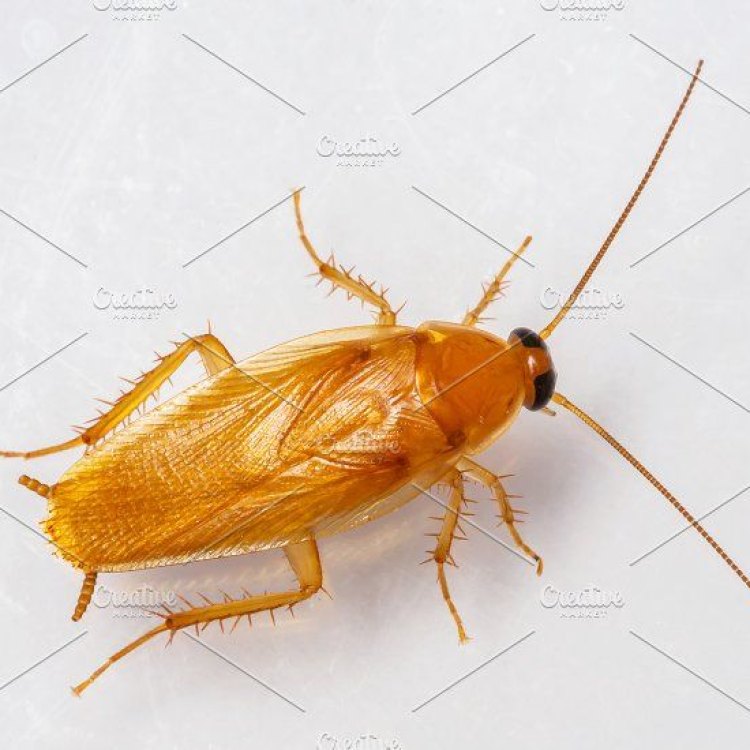
American Cockroach
- Adult Size: Medium to large
- Average Lifespan: 1.5 years
- Reproduction: Sexual
- Reproductive Behavior: Egg-laying
- Sound or Call: None
- Migration Pattern: None
- Social Groups: Solitary
- Behavior: Nocturnal
- Threats: Pesticides, predators, lack of food and water
- Conservation Status: Not evaluated
- Impact on Ecosystem: Can spread diseases, contaminate food, and trigger allergies
- Human Use: None
- Distinctive Features: Wings, long antennae, large size
- Interesting Facts: Can survive without a head for several days, can hold its breath for up to 40 minutes
- Predator: Birds, reptiles, mammals
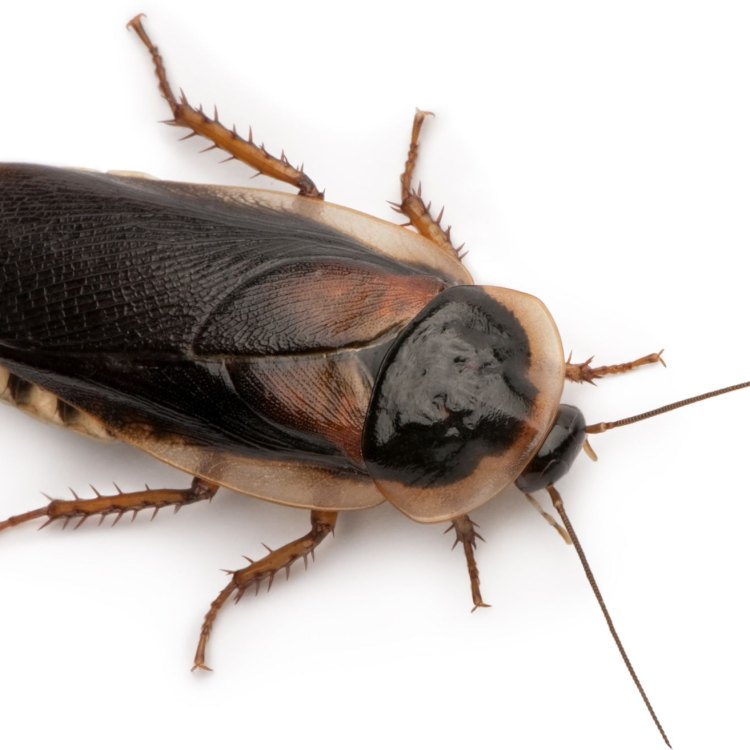
Periplaneta americana
The Fascinating World of Cockroaches: Surprising Facts, Features, and Threats
When you hear the word "cockroach," what comes to mind? For most people, it may invoke images of a filthy, pesky insect crawling on a dirty kitchen counter. However, there is much more to these creatures than meets the eye. Cockroaches are a diverse and fascinating group of insects that have coexisted with humans for centuries. In fact, they are one of the oldest insects on the planet, having evolved over 300 million years ago PeaceOfAnimals.Com. In this article, we will delve into the world of cockroaches, exploring their unique features, behavior, and potential threats they pose to ecosystems and human health.Size and Lifespan
Cockroaches come in a variety of shapes and sizes, with the adult size ranging from medium to large. The average size of a cockroach is about 1 to 2 inches in length, depending on the species. Some species can grow up to 3 to 4 inches, making them one of the largest insects on earth. Despite their large size, cockroaches are incredibly fast and agile, allowing them to crawl and scurry around with ease.
In terms of their lifespan, cockroaches have a relatively short life span compared to other insects. On average, they can live up to 1.5 years, with the exact lifespan varying depending on the species. However, some species can live up to 2 years under optimal conditions, such as having access to food, water, and shelter Carpet Beetle.
Reproduction and Behavior
Cockroaches reproduce sexually, with males fertilizing the eggs produced by the females. Female cockroaches can lay hundreds of eggs in one lifetime, depending on the species. They typically lay their eggs in dark, secluded areas, such as cracks and crevices, which can make them difficult to detect and eradicate.
The reproductive behavior of cockroaches is known as egg-laying or oviposition. After mating, the female will produce an egg case or ootheca, which contains multiple eggs and is attached to her body. Once the eggs are mature, the female will drop the ootheca in a safe area for the eggs to hatch and develop. The time it takes for the eggs to hatch varies depending on the species, but it can take anywhere from a few weeks to several months.
Sound and Call
Did you know that cockroaches are one of the few insects that do not produce any sound or call? Unlike crickets or grasshoppers, they do not have any specialized organs or structures that can create noise. They communicate with each other primarily through pheromones, chemical signals that are released in their feces and urine. These pheromones help them to find mates, food sources, and potential nesting sites.
Migration and Social Behavior
Cockroaches are not known for their ability to migrate. They are not strong fliers and are more likely to crawl or hitchhike to new locations. They do move around to find food and shelter, but their movement is more localized rather than a long-distance migration. Some species, however, have been known to travel several miles, such as the Asian cockroach, which can fly up to 120 feet in search of food.
In terms of their social behavior, cockroaches are solitary creatures. They do not form any social groups or colonies like ants or termites. They may coexist in the same area, but they do not have any social hierarchy or cooperative behavior. However, when resources are limited, some species have been known to cannibalize each other to survive.
Nocturnal Nature
If you have ever encountered a cockroach in your home, it was most likely at night. That's because cockroaches are primarily nocturnal and prefer to emerge and forage for food at night. They have a natural aversion to light, which is why they tend to hide in dark, secluded areas during the day. This nocturnal behavior makes them even more elusive and challenging to control.
Threats and Conservation Status
Cockroaches may not be considered an endangered species, but they do face some threats that can impact their populations. The most significant threat to cockroaches is the use of pesticides. As a survival tactic, cockroaches have developed resistance to many commonly used pesticides, making it difficult to eradicate them. Additionally, the destruction of their natural habitats, such as forests and wetlands, can also have a significant impact on their survival.
Currently, cockroaches are not evaluated on the IUCN Red List, which assesses the conservation status of species. However, it is essential to consider the potential impact of their declining populations on ecosystems. As scavengers, cockroaches play a vital role in breaking down and recycling organic matter, helping to maintain the balance of their environment.
Dangers to Ecosystem and Human Health
Cockroaches may seem like harmless insects, but they can pose significant threats to both ecosystems and human health. As mentioned earlier, they play a crucial role in ecosystems by helping to break down decaying matter. However, they can also spread diseases and contaminate food sources as they scurry around looking for food.
One of the most well-known diseases that cockroaches can spread is salmonella. They can carry this harmful bacteria on their bodies and legs, transferring it to surfaces and food sources. Cockroaches can also trigger allergies and asthma attacks in humans through their droppings and shed skin. As they crawl around, these particles can become airborne and cause respiratory issues.
Distinctive Features
Cockroaches have several distinctive features that make them easily recognizable. One of their most recognizable features is their wings, which they use primarily for gliding and not actual flight. Not all cockroaches have wings, but those that do have two pairs, with the outer wings being tough and leathery to protect the inner pair.
Another distinctive feature of cockroaches is their long antennae, which can be longer than their bodies. These antennae play a crucial role in their ability to find food and navigate their surroundings. Some species of cockroaches even have specialized antennae that can detect different chemicals and potential threats.
Additionally, cockroaches have a visibly elongated body and six legs with tiny hooks at the end, allowing them to climb and crawl on almost any surface. They also have large compound eyes, which give them a wide field of vision but not the greatest visual acuity. Instead, they rely on their antennae to sense vibrations and changes in their environment.
Interesting Facts
Aside from their distinctive features and strange behavior, cockroaches have many interesting and surprising facts. One of the most well-known facts is that cockroaches can survive for several days without their heads. This is because they have an open circulatory system, meaning they do not rely on their brain to control their breathing and blood flow. However, without a mouth to drink water, they eventually die from dehydration.
Another fascinating fact about cockroaches is their ability to hold their breath for a surprisingly long time – up to 40 minutes! This allows them to survive underwater for extended periods, making it difficult to drown them. It also helps them avoid getting trapped in water, such as in sinks and drains, where they can hold their breath until they can crawl out.
Predators
Cockroaches may be resilient and hard to eradicate, but they still have predators in their natural habitats. Common predators of cockroaches include birds, reptiles, and mammals such as rats and mice. Some spiders, ants, and beetles also feed on cockroaches, making them a crucial part of the food chain.
Conclusion
In conclusion, cockroaches may be infamous and misunderstood insects, but they are a crucial and fascinating part of our world. From their unique features to their behavior, cockroaches have evolved to survive and thrive alongside humans. However, they can pose significant threats to ecosystems and human health, highlighting the importance of proper pest control and management. As we continue to coexist with cockroaches, it is essential to understand and appreciate these resilient creatures and all their quirks.
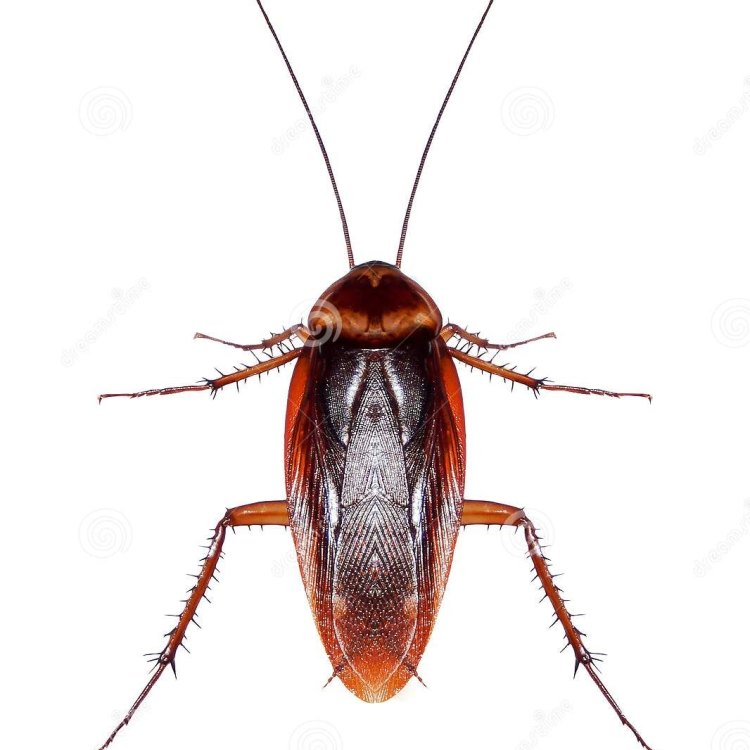
The Mad Scavenger: The Fascinating World of the Cockroach
Disclaimer: The content provided is for informational purposes only. We cannot guarantee the accuracy of the information on this page 100%. All information provided here may change without prior notice.

